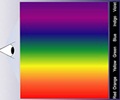Researchers have found that the familiarity to colour stays with the brain separately despite the fact that the brain is attuned to link a colour with a particular object. They also found that it can assign the colour to some other object.
The researchers at the University of Chicago have for the first time found that the brain processes the shape of an object and its colour in two separate pathways, and, though the object's shape and colour normally are linked, the neural representation of the colour can survive alone.When that happens, the brain establishes a new link that binds the colour to another visible shape.
"Colour is in the brain. It is constructed, just as the meanings of words are constructed. Without the neural processes of the brain, we wouldn't be able to understand colours of objects any more than we could understand words of a language we hear but don't know," said Steven Shevell, a University of Chicago psychologist who specializes on colour and vision.
The study expands the understanding of how the brain is able to integrate the multiple features of an object, such as shape, colour, location and velocity, into a unified whole.
"An aspect of human vision that we normally don't appreciate is that different features of an object, including colour and shape, can be represented in different parts of the brain," said Shevell.
If a person sees a basketball coming, it is perceived as having a particular colour, shape and velocity.
Advertisement
For the study, the researchers used a technique called binocular rivalry, which presents a different image to each eye and thus pits signals from the right eye against signals from the left.
Advertisement
Firstly, they showed subjects vertically oriented green stripes in the left eye, and a horizontally oriented set of red stripes in the right eye.
"The brain cannot fuse them in a way that makes sense. So the brain sees only horizontal or vertical," said Shevell.
They developed a new form of the technique that allowed the horizontal pattern to be suppressed without eliminating its red colour, which continued on to the brain.
At this point, the brain has a musical chairs problem-both the red and green colours reach consciousness but with only the one vertical pattern-one object but two colours.
The surprising result was that the "disembodied red, which originated from the unseen horizontal pattern in one eye, glued itself to parts of the consciously seen vertical pattern from the other eye.
That proves the idea of neural binding or neural gluing, where the colour is connected to the object in an active neural process," said Shevell.
The study has been published in Psychological Science.
Source-ANI
RAS











